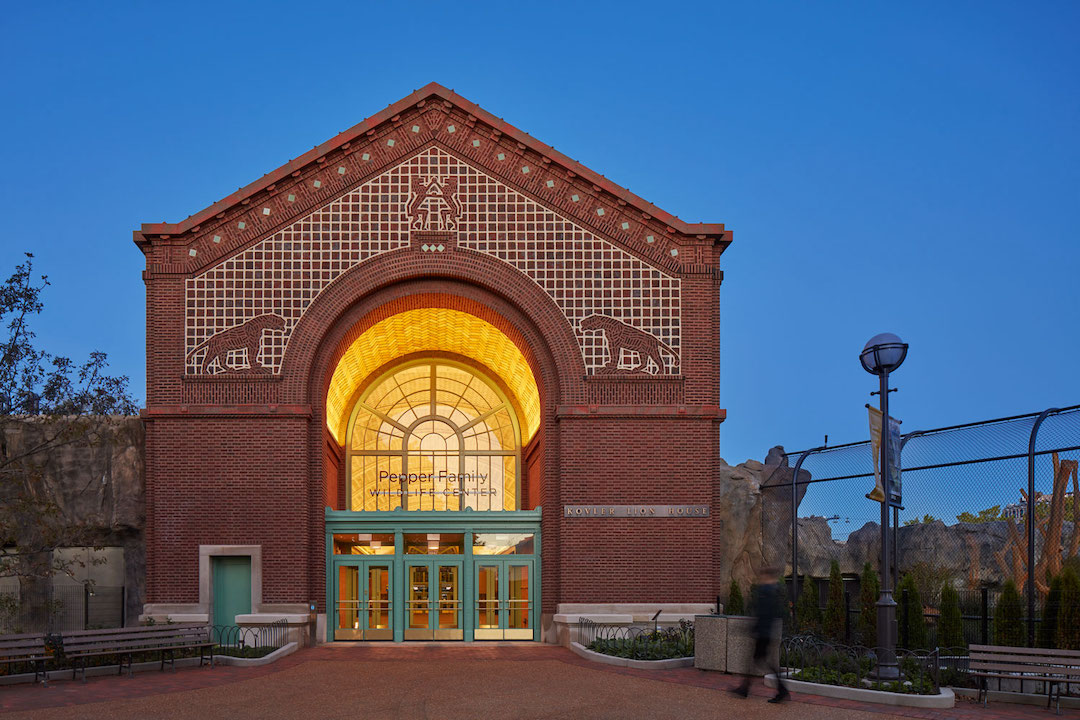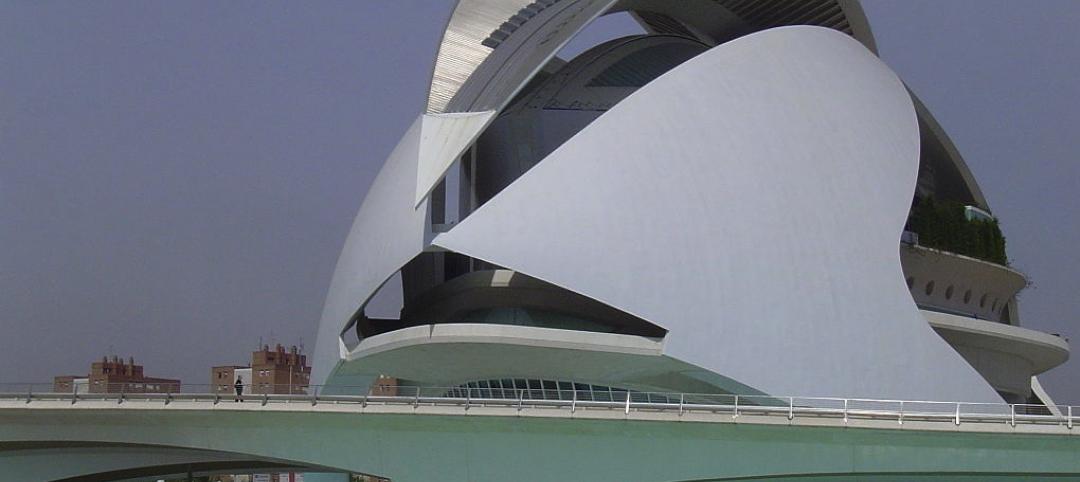Goettsch Partners has recently announced the completion of the $41 million renovation, restoration, and expansion of the Pepper Family Wildlife Center at Lincoln Park Zoo. The facility is home to a pride of African Lions, Canada Lynx, red pandas, and snow leopards.
The 54,000-sf facility nearly doubles the size of the previous lion habitat and provides increased transparency with a more immersive experience for visitors while restoring the architectural integrity of the original landmarked building. The habitat focuses on providing choices for the animals and enhanced wellbeing, from thermal comfort zones for heating and cooling to intricate rock work and trees for climbing.

The original building, located at the heart of Lincoln Park Zoo, was originally completed in 1912 and designated a Chicago Landmark in 2005. The new lion habitat spans the full northern side of the building with the design informed by data collected by the zoo over the last several years on lion behavior and space use to understand their preferences.
Large 1 1/2”-thick glass panels provide expansive views of the outdoor lion space. The savanna-style habitat includes detailed rock work to introduce climbing features and expand environmental options for the lions while providing embedded heating and cooling elements for climate control. Tree structures and deadfall are made from trees certified by the Forest Stewardship Council. Food zip lines, simulating prey, provide an enrichment opportunity for the lions.

The building’s design facilitates viewing from the Lion Loop, a sunken elliptical path leading visitors down from the TAWANI Great Hall into the center of the habitat. The loop provides visitors the opportunity to view lions from all around, even through the skylights overhead. Additionally, a demonstration training wall allows visitors to view the lions working with zoo staff to participate in their care.
Goettsch Partners designed the project in collaboration with Seattle-based zoo exhibit specialists PJA.


Related Stories
| May 29, 2014
7 cost-effective ways to make U.S. infrastructure more resilient
Moving critical elements to higher ground and designing for longer lifespans are just some of the ways cities and governments can make infrastructure more resilient to natural disasters and climate change, writes Richard Cavallaro, President of Skanska USA Civil.
| May 23, 2014
Big design, small package: AIA Chicago names 2014 Small Project Awards winners
Winning projects include an events center for Mies van der Rohe's landmark Farnsworth House and a new boathouse along the Chicago river.
| May 23, 2014
Top interior design trends: Gensler, HOK, FXFOWLE, Mancini Duffy weigh in
Tech-friendly furniture, “live walls,” sit-stand desks, and circadian lighting are among the emerging trends identified by leading interior designers.
| May 22, 2014
No time for a trip to Dubai? Team BlackSheep's drone flyover gives a bird's eye view [video]
Team BlackSheep—devotees of filmmaking with drones—has posted a fun video that takes viewers high over the city for spectacular vistas of a modern architectural showcase.
| May 22, 2014
IKEA to convert original store into company museum
Due to open next year, the museum is expected to attract 200,000 people annually to rural Älmhult, Sweden, home of the first ever IKEA store.
| May 21, 2014
Gehry unveils plan for renovation, expansion of Philadelphia Museum of Art [slideshow]
Gehry's final design reorganizes and expands the building, adding more than 169,000 sf of space, much of it below the iconic structure.
| May 20, 2014
Kinetic Architecture: New book explores innovations in active façades
The book, co-authored by Arup's Russell Fortmeyer, illustrates the various ways architects, consultants, and engineers approach energy and comfort by manipulating air, water, and light through the layers of passive and active building envelope systems.
| May 19, 2014
What can architects learn from nature’s 3.8 billion years of experience?
In a new report, HOK and Biomimicry 3.8 partnered to study how lessons from the temperate broadleaf forest biome, which houses many of the world’s largest population centers, can inform the design of the built environment.
| May 19, 2014
Calatrava wins court case concerning 'Calatrava bleeds you dry' website
A judge has ordered the left-wing political party Esquerra Unida to pay €30,000 to Santiago Calatrava because of "insulting and degrading" website.
| May 15, 2014
First look: 9/11 Memorial Museum opens to first-responders, survivors, 9/11 families [slideshow]
The 110,000-sf museum is filled with monumental artifacts from the tragedy and exhibits that honor the lives of every victim of the 2001 and 1993 attacks.
















